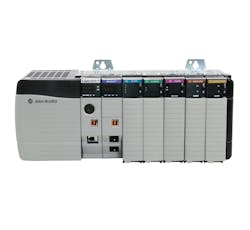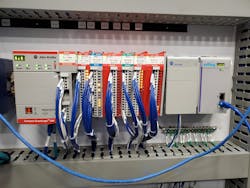Michigan-based TranTek Automation designs and builds automated welding, material handling, inspection, and assembly systems. The company is known for its preconfigured robotic welding cells, as well as robot transfer units, tip dressers for resistance welding, conveyors, and retractable locating pins.
One automation project the company recently secured required TranTek to develop a system consisting of six plasma cutting robots that could synchronously apply plasma torches to large, made-to-order steel structural parts using various production recipes. Plasma cutters cut metal by sending air or an inert gas through a plasma torch to spark an electrical arc. This forces the plasma through the torch tip to cut metal. The arc of a plasma cutter can reach temperatures of 45,000° F.
tManager can be used with a variety of enterprise databases, such as Microsoft SQL Server, Oracle Database, MySQL, AWS IoT SiteWise, and Azure Cloud. In addition, via the module’s front Ethernet port, drivers can connect tManager to PLCs from Allen-Bradley, Siemens, and Schneider Electric.
Ebert added that configuration of tManager is simplified because, once it’s installed into the ControlLogix rack, the transaction module automatically enumerates PLC and database tags and structures and can monitor tags without touching the PLC logic. “We also avoided the code maintenance headaches associated with custom software,” he said.
“Thanks to the bi-directional data exchange capability of tManager, our customer can now confirm and update shipping orders directly within the ERP system, enabling them to fulfill their orders for steel parts faster and speeding their time to market,” said Ebert.
“tManager enabled us to design a system that could seamlessly bring in the production data for thousands of steel parts—everything from how the steel has to be cut to where holes should be located along the axis,” Ebert said. After tManager downloads the manufacturing recipes from the database to the PLC, the plasma cutting robots can automatically adjust variables, such as amperage and gas flow.
Ebert also noted that the TranTek customer is so pleased with this system that they’ve “decided to move forward on a long-term plan to automate and upgrade their systems, and tManager has become a standard for all their installations.”




